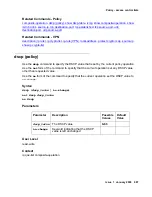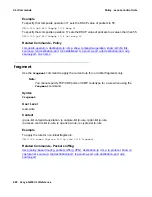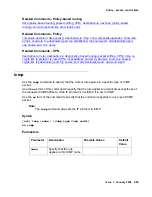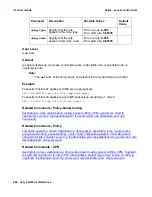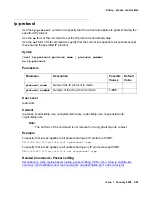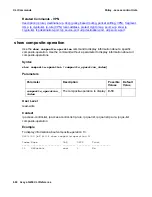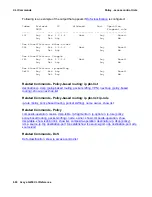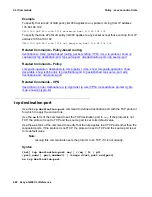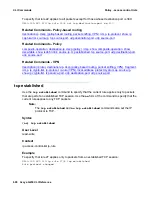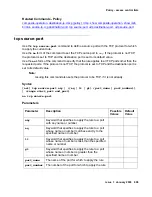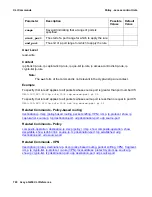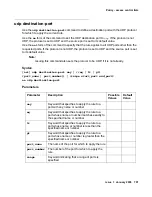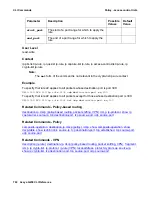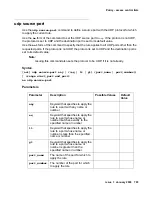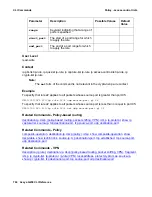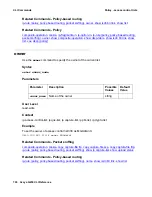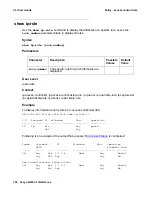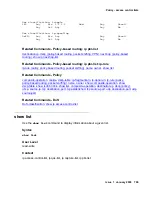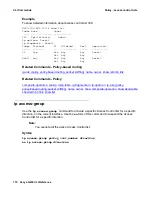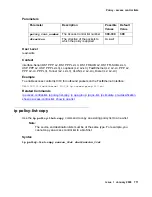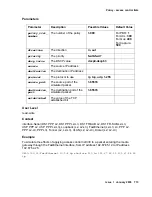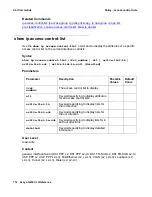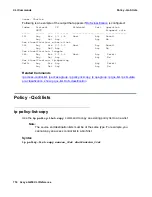
Policy - access control lists
Issue 1 January 2008
701
udp destination-port
Use the
udp destination-port
command to define a destination port with the UDP protocol
for which to apply the current rule.
Use the
no
form of the command to set the UDP destination port to
any
. If the protocol is not
UDP, the protocol is set to UDP and the source port is set to its default value.
Use the
not
form of the command to specify that the rule applies to all UDP ports other than the
requested ports. If the protocol is not UDP, the protocol is set to UDP and the source port is set
to its default value
Note:
Note:
Issuing this command also sets the protocol to be UDP, if it is not already.
Syntax
[not] udp destination-port any | {{eq | lt | gt}
{
port_name
|
port_number
}} | {range
start_port end_port}
no udp destination-port
Parameters
Parameter
Description
Possible
Values
Default
Value
any
Keyword that specifies to apply the rule to a
port with any name or number
eq
Keyword that specifies to apply the rule to a
port whose name or number matches exactly to
the specified name or number
lt
Keyword that specifies to apply the rule to a
port whose name or number is less than the
specified name or number
gt
Keyword that specifies to apply the rule to a
port whose name or number is greater than the
specified name or number
port_name
The name of the port for which to apply the rule
port_number
The number of the port for which to apply the
rule
range
Keyword indicating that a range of ports is
specified
Summary of Contents for G450 Manager
Page 1: ...Avaya G450 CLI Reference 03 602056 Issue 1 January 2008 ...
Page 32: ...Contents 32 Avaya G450 CLI Reference ...
Page 38: ...About this Book 38 Avaya G450 CLI Reference ...
Page 154: ...Roadmap 154 Avaya G450 CLI Reference ...
Page 1304: ...CLI Commands WFVQ Weighted Fair VoIP Queueing 1304 Avaya G450 CLI Reference ...

